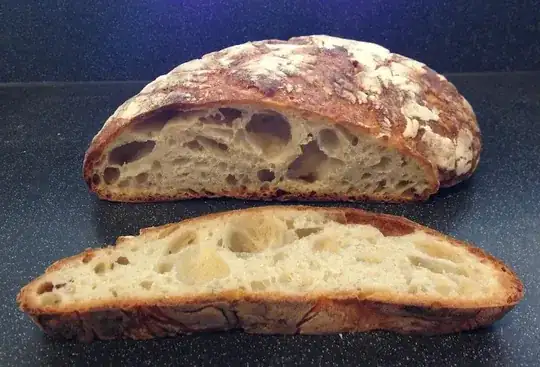I'm using the "Saturday White Bread" recipe from Ken Forkish's Flour Water Salt Yeast. I'm very happy with the results so far, except for the irregularity of the bubbles. Here's my loaf:

For contrast, here's a photo of the same recipe from Forkish's book:

His bubbles are not perfectly uniform, but they are a lot more uniform than mine. The dense areas are not as dense, and the largest bubbles are not nearly as large.
The recipe I followed:
1000 grams all-purpose unbleached flour
720 grams water, 95°f
21 grams salt
4 grams “active dry” yeast
Complete procedure here.
Some areas are very dense with small bubbles, while others are large and cavernous. An average 1/2" thick slice has two or three large holes going clean through.
Is there any way to even out the bubble size without reducing the overall airiness?